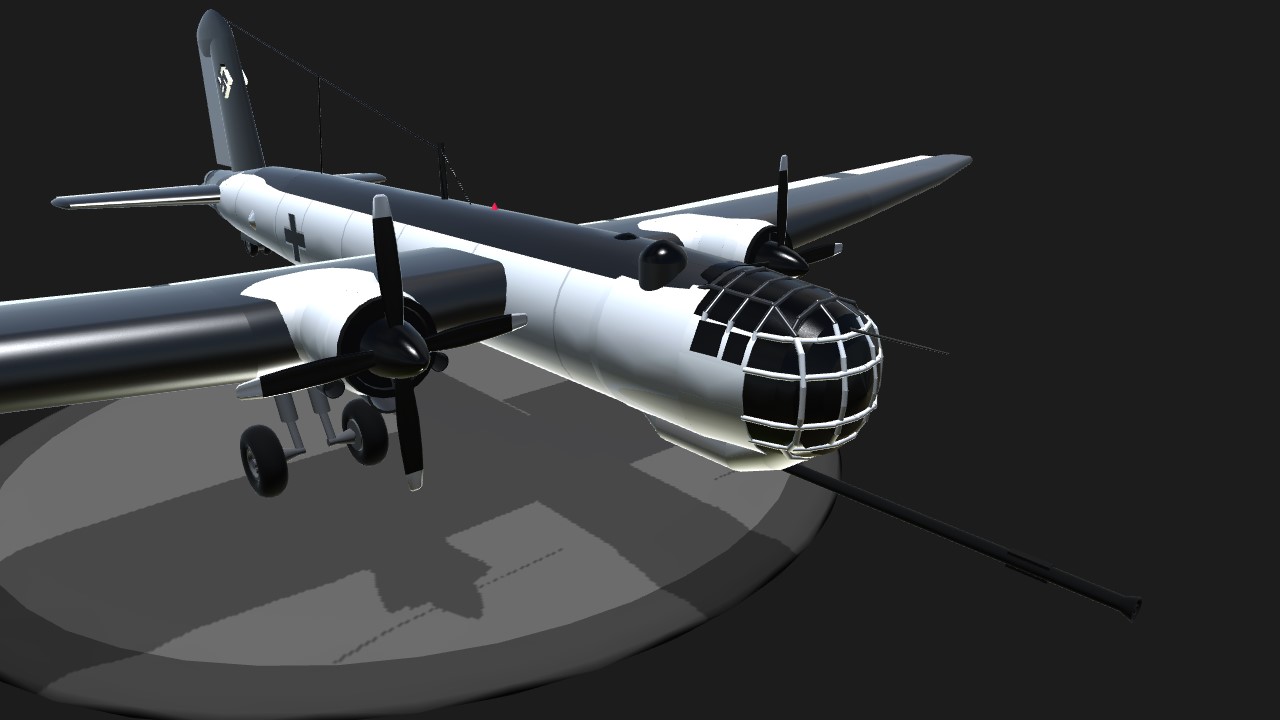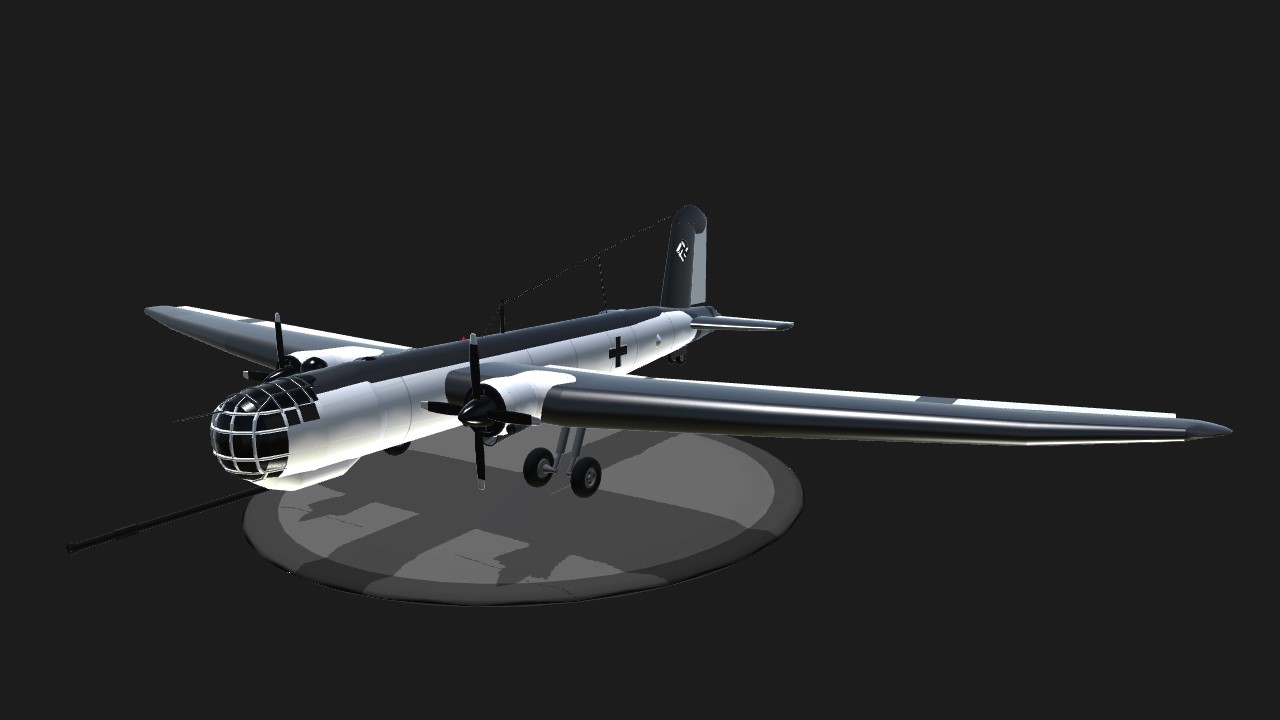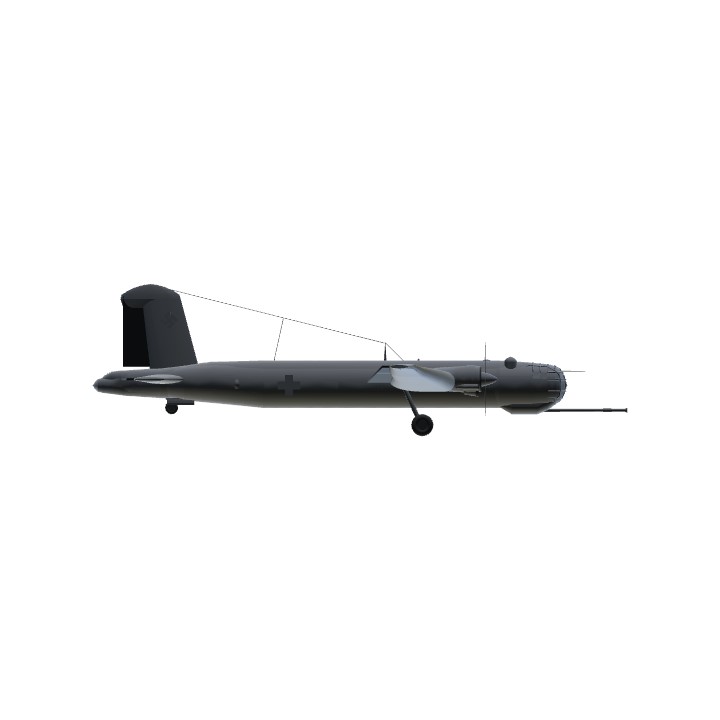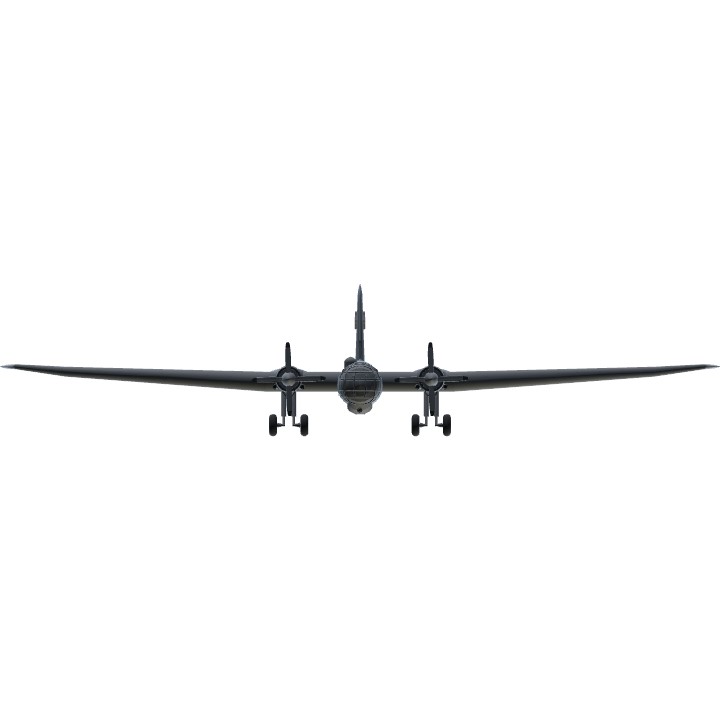BECAUSE A 75mm GUN ON A BOMBER IS NORMAL...
WHY GERMANY WHY.......
Anyway...
Credit: @Poopatron71: for the cockpit & @BogdanX for making the plane fly as fast as the real thing!
Controls:
Fire guns: fire 75mm cannon
Vtol: Flaps
History:
The Heinkel He 177 Greif ("griffin") was a large long-range heavy bomber flown by the Luftwaffe during World War II. In general terms, the He 177 had payload/range capability similar to strategic bombers in the USAAF and RAF, although it had much higher figures for its cruising and maximum speeds.
Designed to a 1936 requirement known as Bomber A, the aircraft was originally intended to be a purely strategic bomber intended to support a long-term bombing campaign against Sovietindustry in the Urals. During the design phase, Luftwaffe doctrine came to stress — unrealistically, for a 30-meter (100 ft) wingspan-class bomber airframe — the use of moderate-angle dive bombing in order to improve accuracy, and the design was extensively modified to allow shallow-angle "glide bombing". This change, along with the demand that it use only two fully nacelled "power system" engines, required to each be of over 1,500 kW (2,000 PS) output levels apiece to allegedly reduce drag for the initially demanded "glide bombing" capability, created numerous problems for the aircraft. Luftwaffe aircrew nicknamed it the Luftwaffenfeuerzeug("Luftwaffe's lighter") or the "Flaming Coffin" due to the serious engine problems on initial versions. Many of these stemmed from the power plants' inadequately-designed and poorly maintained installation in their wing nacelles, which caused cooling and ventilation problems that were never completely solved.
Specifications
General Characteristics
- Created On iOS
- Wingspan 117.6ft (35.9m)
- Length 87.3ft (26.6m)
- Height 24.8ft (7.6m)
- Empty Weight 39,321lbs (17,835kg)
- Loaded Weight 46,181lbs (20,947kg)
Performance
- Horse Power/Weight Ratio 0.259
- Wing Loading 33.2lbs/ft2 (162.1kg/m2)
- Wing Area 1,390.6ft2 (129.2m2)
- Drag Points 35036
Parts
- Number of Parts 341
- Control Surfaces 9
- Performance Cost 1,206







WIsh I was as good as you XvX
But the American PBJ?
@Mumpsy
Thanks
Pretty!
@SimpleFlow it flat spins for
Me
@Himynameiswalrus
Fly's for me
It doesn't fly